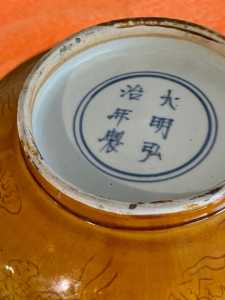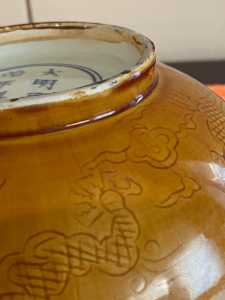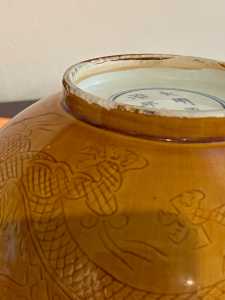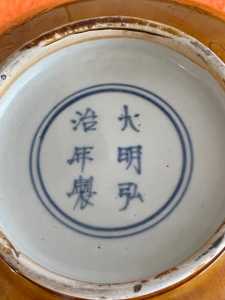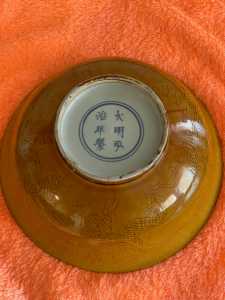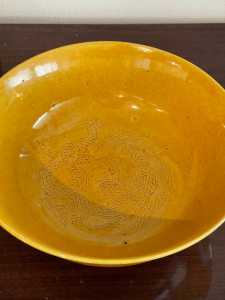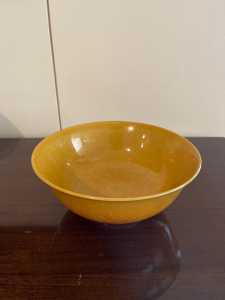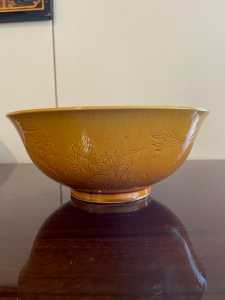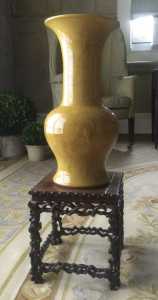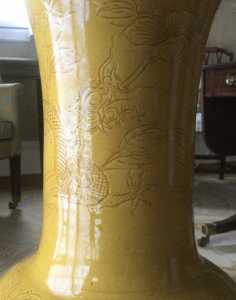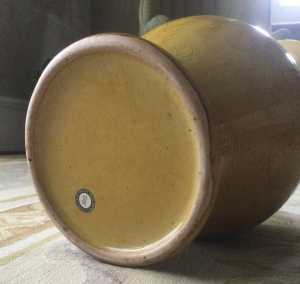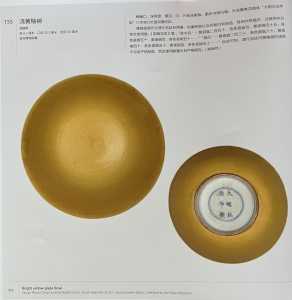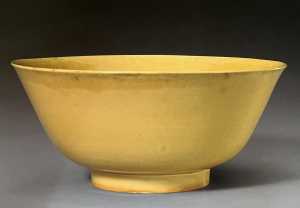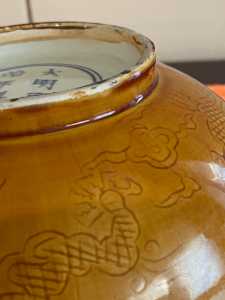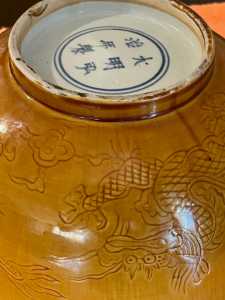The Chinese and Asian Art Forum. For Fans, Collectors and Dealers.
 Basic Rules For the BidAmount Asian Art Forum: Talk about whatever you want. You can even discuss and offer things that are for sale if they are authentic. Maximum image file size per post is 2 MB. Images of 700pxl x 700pxl are optimal if saved at a medium resolution. Be respectful of others and enjoy yourself. Click the YouTube link for a brief tutorial on using the forum. You can also EMBED Videos by cutting and pasting from You-Tube, Vimeo etc.
Basic Rules For the BidAmount Asian Art Forum: Talk about whatever you want. You can even discuss and offer things that are for sale if they are authentic. Maximum image file size per post is 2 MB. Images of 700pxl x 700pxl are optimal if saved at a medium resolution. Be respectful of others and enjoy yourself. Click the YouTube link for a brief tutorial on using the forum. You can also EMBED Videos by cutting and pasting from You-Tube, Vimeo etc.
NOTE: To post an item or add a new post, click open the category title from the FORUM LIST, and CLICK the Blue ADD TOPIC button.
Hello All.
This is one of my first Qing Ceramics bought from Mike Vermeer (sadly he passed away few years ago) around 2006. In 2006, the chinese antique market was not as bouyant as today according to him at that time... His website was teadust.com. Looking back I wish during that time I bought some Qing pieces but this is one of the two pieces I bought from him.
Here is the object. it is about 22.5 cm diameter. quite heavily potted.
Thanks...
Al
That's a Hongzhi mark. This looks like a substantial piece to my novice eyes. Did Mike say it was of the period or was it done later in Kangxi, etc?
It is a lovely bowl, and I would also love to know what Mike said about it. To my eyes the foot looks early part Qing, maybe Kangxi even.
I wish I had been into Chinese pieces back while he was alive, I would have loved to purchase such a thing from him.
Cheers,
Jeremy
Is the condition as fabulous as I'm thinking? Does it have even and small frits or hairlines or is it basically perfect?
@jbeer2121 do you know if they potted bowls like this thickly during Kangxi or would thicker be more of a Ming thing?
John,
It does look like its perfect condition wise. I am not sure about how heavily potted the Kangxi monochromes were, to be honest monochromes are not in my wheelhouse at all. I recently find myself debating buying a turquoise glazed bottle vase, that I am like 90% sure is 18th or early 19th, and going through old references on Gotheborg, which were mostly answered by Mike.
I have seen a few Guangxu examples but the bases don't look this good usually... But on Ming bowls the foot, in my experience, tapers in slightly, this almost appears to flare out slightly. Though I think Kangxi are thinner usually.
Basically I don't know, if this were a blue and white I would almost certainly say late 18th early 19th from the shape and color of the foot.....
I hope Al has Mike's write up, it would be very interesting to see.
This thing is stunning, regardless of age.
Jeremy
Doesn’t a yellow bowl from this period indicated Imperial?
After seeing the yellow bowl, I have to show my yellow Yen Yen vase purchased from Mike Vermeer years ago.
It was sold to me as late 18th century and I am inclined to agree. The yellow is applied directly to the biscuit with no white underglaze at all. Notice the cross hatching used in place if individual scales on the dragon. This vase is 16.5 inches tall, the paste is compact and light tan in color. There is a subtle crackle in the glaze due to stresses possibly induced during firing. This piece is most definitely not Imperial, but still is a really nice yellow glazed example.
They are both lovely pieces. Thanks for showing them. I like the small table yours is on, too, William.
@superox @johnshoe @jbeer2121 @lotusblack @william @julia
Hi all -
Not Hongzhi mark/period, the written of the ‘Hong’ and ‘Zhi’ characters are totally wrong and contain numerous stroke errors. This bowl is much later …
Marks on Imperial Hongzhi wares are written in a very specific way, totally different then that seen on this bowl.
The yellow monochrome glaze is regarding as the highest quality produced in either Ming or Qing dynasties …
The Kangxi Imperial kilns produced close copies of Hongzhi yellow and white monochromes, attached images/description of a bowl with Hongzhi mark, Gugong, Palace Museum Beijing …
It is a lovely bowl …
Stuart
Hi Al -
Having spent some time looking at the images on my laptop, as with John @johmshoe and Jeremy @jbeer2121, I to would be most interested to hear how Mr Vermeer described this piece when you acquired it from him? ...
Stuart
Hi Will. Beautiful piece you got. Stuart, in terms of what Mike Vermeer told me, he said its a good late copy of an imperial bowl made in 19th century. Early 1800s. I bought it in 2002. (long time ago!)
I remember going to see Tregaskis here in Sydney and he told me it is made in republic era.
One thing I notice is that there is a black spot that seems to run a colour down. I was wondering what is causing this.
Also, it feels quite heavy and not thinly potted.
Any comment on the mark and how it was executed ?
What could be its market value ? (just out of curiousity)
Thanks
Al
@johnshoe Hi. No condition is perfect. I had it kept on a cupboard since I bought it (2002 actually) now just want to bring it out to understand more about it...
Personally, I dont think its Mark and period and would be later than Kangxi (according to Mike Vermeer 19th).
Al
Maybe it is a bit of poorly mixed pigment? Or that kind of thing. I don't know much about monochrome, I find them difficult. However, I would tend to think a heavily potted bowl is more likely 19th c than 18th, especially with that foot/base. I don't know if it could be Republic, but to me it seems less likely. I imagine an expert like Mike Vermeer would have known that and said so.
Hi Al -
Thank you for forwarding Mr Vermeer thoughts when acquired and the additional images ...
Based on the images, so always subjective, and examples of both Imperial and private kiln 18th century monochromes seen and handled in museums, private collections and auction houses, I do not think this is 18th century ..
The incised centrel dragon/clouds is based upon/copies a well know Imperial Hongzhi design, the dragons on which are, usually, in green enamels with clouds and, on the bowls exterior, amongst incised waves all on a white ground ...
But I have never seen a genuine 18th century bowl with central incised dragon/clouds, and the execution of the dragons/clouds on the exterior does not seem to be in any 18th century style I have seen ...
As mentiond, the glaze tone, incising style and mark writing discounts a Hongzhi attribution ...
Whether this is early 19th, as Mr Vermeer thought, or somewhat later I lack the knowledge to say. You may wish to consider sending a description/images to Peter for his thoughts/opinion? ...
Stuart
Thanks for visiting "The BidAmount Asian Art Forum | Chinese Art"
If you sell on eBay, or have a shop feel free to post images and descriptions and links.
Check back often for discussion about the latest news in the Chinese art and antique world. Also find out about the latest Asian art auctions at Sotheby's, Christie's, Bonhams and Tajans.
Auction results for: fine porcelain, ceramics, bronze, jade, textiles and scholar's objects. As well as Japanese, Thai, Vietnamese and other Asian cultures.
Thank you,
Peter Combs
Topics and categories on The BidAmount Asian Art Forum | Chinese Art
Kangxi vases, Kangxi dishes and chargers, Kangxi ritual pieces, Kangxi scholar's objects, Qianlong famille rose, Qianlong enamels, Qianlong period paintings, Qianlong Emporer's court, Fine porcelain of the Yongzheng period. Chinese imperial art, Ming porcelain including Jiajing, Wanli, Xuande, Chenghua as well as Ming jades and bronzes.
The BidAmount Asian Art Forum | Chinese Art
A free Asian art discussion board and Asian art message board for dealers and collectors of art and antiques from China, Japan, Korea, Thailand, Cambodia, Vietnam and the rest of Asia. Linked to all of the BidAmount Asian art reference areas, with videos from plcombs Asian Art and Bidamount on YouTube. Sign up also for the weekly BidAmount newsletter and catalogs of active eBay listing of Chinese porcelain, bronze, jades, robes, and paintings.
The art of calligraphy - and for the ancient Chinese it certainly was an art - aimed to demonstrate superior control and skill using brush and ink. Calligraphy established itself as one of the major Chinese art forms during the Han dynasty (206 BCE - 220 CE), and for two millennia after, all educated men were expected to be proficient at it.
The Museum’s collections of Asian art span nearly five millennia and encompass the cultures of China, the Himalayas, India, Japan, Korea, and Southeast Asia. In 2007, the Museum launched an initiative to create dedicated galleries for the collection, beginning with a gallery for the arts of Korea ...
Chinese art is full of symbolism, in that artists typically seek to depict some aspect of a totality of which they are intuitively aware.
China Online Museum is the finest online museum of Chinese art. It features Chinese calligraphy, painting, ceramics, bronzes, carving, and other artworks.
Chinese Ceramics & Works of Art. Overview Upcoming auctions Contacts Auction results ... Christie’s sales of Chinese ceramics and works of art showcase centuries of Chinese history. Held throughout the year in London, New York, Paris and Hong Kong, they attract a wide audience of collectors and connoisseurs vying for pieces as diverse as ...
Explore Asian Art Week. Contact the Specialist Department. Chinese Paintings ... Senior Specialist, Head of Sale. [email protected]. Tel:+1 212 641 5760. Bid in-person or online for the upcoming auction:Fine Chinese Paintings on 10 September 2019 at New York. Bid in-person or online for the upcoming auction:Fine Chinese Paintings on 10 ...
Discover an abundance of must-see art from all corners of a vast continent at Christie’s NY Asian Art Week. From contemporary classical and Chinese paintings to works with exemplary provenance from the Art Institute of Chicago, our Rockefeller Paza galleries will be full of ancient treasures and contemporary masterworks in a salute to the vibrant arts of Asia.
Sold to benefit The Art Institute of Chicago’s Asian Art Acquisition Fund, the sale features 84 lots with a focus on Ming and Qing porcelains, and offers a rare insight into the taste for collecting Chinese ceramics and works of art in the Midwest from the end of the 19th century through the 1980s. Highlights include two Wanli wucai garlic-head vases, a Qianlong mark and period, blue and ...
Specialist, Chinese Paintings, Christie's London Dr Malcolm McNeill is a Specialist in Chinese Paintings at Christie’s, based in London. He previously worked as an assistant curator of the Chinese collections and the Victoria and Albert Museum in London, as a researcher at the British Museum, and as a translator and tour guide at the National Palace Museum in Taipei.
The Christie's Education 2020 Conference: The Chinese Art Market 18 Jun 2019 Christie’s Education is delighted to announce our first international academic conference in Asia which will take place in Hong Kong from 26-27 November 2020 at the Hong Kong Convention and Exhibition Centre and will run in parallel with Christie’s Hong Kong Autumn Auctions.
The summer Chinese Art sale in Hong Kong will feature works of art from several private collections, including Qing porcelains and textile from the collection of the legendary Chinese art dealer A. W. Bahr (1877–1959), fine gilt bronze Buddhist sculptures from an old Hong Kong collection, an East Asian collection of Qing dynasty wine cups and jades, and a Japanese collection of Song ceramics ...
Sotheby's Chinese Works of Art Department holds two auctions each year in London, New York, Hong Kong and Paris.
Chinese Art - View Auction details, bid, buy and collect the various artworks at Sothebys Art Auction House.
With more than 340 Chinese works of art dating from the Neolithic to the Republic periods, highlights of this sale include a selection of Qing Imperial monochromes from the collection of Arnold and Blema Steinberg, early ceramics from the Art Institute of Chicago and Chinese porcelain and works of art from the collection of Henry Arnhold.
Results: Sotheby's Asia Week achieved $52.4 million in six strong auctions, exceeding pre-sale estimates. With 76.5% of lots sold and 60.3% of lots surpassing high estimates, the Asian art sales at Sotheby's indicate continued collector interest in the finest works of art from China, India and and the Himalayas.
Today's sale of Important Chinese Art will proceed as planned with sessions at 10 AM and 2 PM EDT. Sotheby's will be monitoring the weather conditions throughout the day and will be available to coordinate alternative bidding options should conditions make it difficult for clients to attend the auction in person.
Bonhams Chinese Art department is renowned for offering the finest works of art representing the richness and breadth of China's artistic heritage, particularly Imperial porcelain, white and spinach green jades, cloisonné and Buddhist art. Specialised international auctions are held globally, including London, Hong Kong and San Francisco.
Bonhams : Chinese Works of Art We use cookies to remember choices you make on functionality and personal features to enhance your experience to our site. By continuing to use our site you consent to the use of cookies. Please refer to our privacy and cookie policies for more information.
Bonhams Fine Art Auctioneers & Valuers: auctioneers of art, pictures, collectables and motor cars. We use cookies to remember choices you make on functionality and personal features to enhance your experience to our site. By continuing to use our site you consent to the use of cookies. ... Chinese Art (US) General enquiries
Bonhams : Fine Chinese Art We use cookies to remember choices you make on functionality and personal features to enhance your experience to our site. By continuing to use our site you consent to the use of cookies. Please refer to our privacy and cookie policies for more information.
Bonhams Fine Art Auctioneers & Valuers: auctioneers of art, pictures, collectables and motor cars Bonhams : Asian Art We use cookies to remember choices you make on functionality and personal features to enhance your experience to our site.
Bonhams are international auctioneers of fine Chinese and Japanese art. We specialise in rare Imperial and Export Chinese ceramics and works of art, as well as Japanese ceramics, fine and decorative works of art from the Neolithic Period to the 20th century. View on map
Bonhams Fine Art Auctioneers & Valuers: auctioneers of art, pictures, collectables and motor cars. We use cookies to remember choices you make on functionality and personal features to enhance your experience to our site. By continuing to use our site you consent to the use of cookies. ... Asian Art Bonhams. Work. 22 Queen St.
